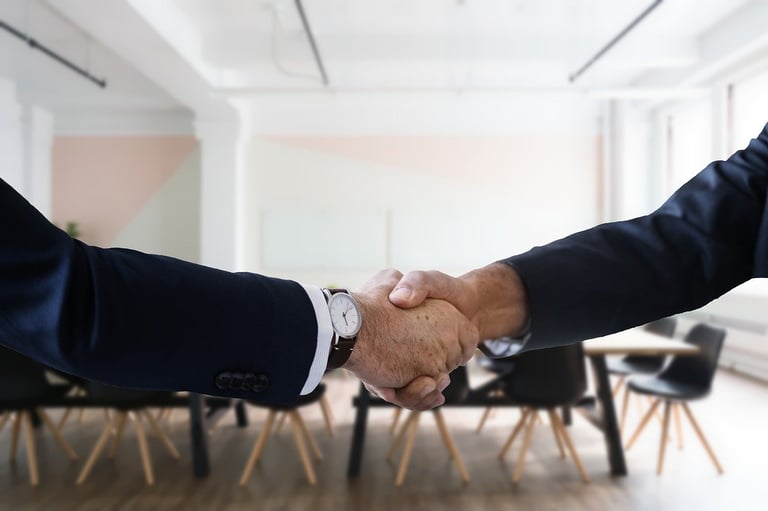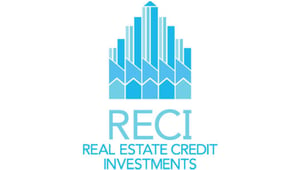European Metals Holdings Ltd (LON:EMH) has today announced the successful completion of its six core-hole infill drilling program at the Cinovec Project. A total of 2,697.1m was completed on time and without loss time accidents. Analytical results for three drillholes in the eastern sector and for two drillholes on the western sector of the of the Cinovec South deposit are reported. Results for hole CIS-4 have previously been reported.
Key Points:
· All six planned infill core drillholes completed for a total of 2,697.1m drilled.
· Analytical results confirmed the expected lithium, tin and tungsten contents and mineralization widths.
· The results for the two infill drillholes in the western part of the Cinovec South deposit exceed expectations.
· Drillhole CIS-9 returned one of the best results of the Company’s drilling program to date: 204.6m averaging 0.44% Li2O, (and within it 70m@0.58%Li2O; 13m@0.19%Sn, 6m@0.58%Sn, 3m@1.02%Sn and 0.179%W).
· Drillhole CIS-8 returned a continuous relatively high-grade lithium mineralization interval that includes multiple zones of tin and tungsten mineralization: 152.5m averaging 0.41% Li2O, (and within it 3m@0.52%Sn, 6m@0.12%Sn and 0.077%W, 7m@0.14%Sn).
· In the eastern part, the best results are from CIS-7, with 45.5m averaging 0.37% Li2O, and 102m averaging 0.31%Li2O, with strong tin and tungsten credits (11m@0.24%Sn and second interval includes 12m@0.17%Sn and 13m@0.16%W).
European Metals Holdings Ltd CEO Keith Coughlan said “We are very pleased that not only have we competed the planned drilling program on time and within budget, but that the results are excellent, in particular with respect to the two infill drillholes on the western part of the Cinovec South deposit. These drillholes intersected strong lithium mineralization with significant tin and tungsten contents. The results from this drilling will allow the Company to convert additional resources to the Indicated status and further optimize the Cinovec South mine plan. The geological and resource model upgrade is now underway.”
Drill Program
The completed six hole drill program at Cinovec South was planned to focus on infill drilling in two areas where data density is low and ‘gaps’ in the resource model occur. Other goals are expectation of adding high grade resource at Cinovec South in critical areas where mining will start, the addition of resources in unclassified areas, the conversion of resources from Inferred to Indicated category, and delivery of material for metallurgical testing. All six planned diamond core holes have been completed. The fifth hole CIS-8 had to be terminated at 426.2m due to technical causes.
The drill hole information is listed in Table 1 below, and their locations are shown on Figure 1 below:
Table 1 – Completed drillholes, Cinovec South
|
Hole ID |
North |
East |
Elevation (m) |
Depth (m) |
Azimuth |
Dip |
Comments |
|
CIS-4 |
-966605.91) |
-778582.91) |
863 |
448 |
16.6 |
-84.6 |
Infill, completed |
|
CIS-5 |
-966607.81) |
-778585.11) |
862.8 |
458.8 |
271.8 |
-81.28 |
Infill, completed |
|
CIS-6 |
-966516.01) |
-778544.11) |
866.2 |
456 |
28.8 |
-86.97 |
Infill, completed |
|
CIS-7 |
-966454.01) |
-778655.31) |
864.4 |
450.3 |
223.9 |
-89.76 |
Infill, completed |
|
CIS-8 |
-966570.02) |
-779163.02) |
805 |
426.2 |
347.6 |
-69.69 |
Infill, completed |
|
CIS-9 |
-966570.02) |
-779163.02) |
805 |
457.8 |
37.20 |
-61.18 |
Infill, completed |
Hole locations are recorded in the local S-JTSK Krovak grid, 1) Coordinates surveyed 2)
(Please refer to the announcement on the European Metals Website for Figure 1 – Plan view with projected resource blocks, EMH completed drill holes – www.europeanmet.com.)
After geological logging, drill core is cut in half with a diamond saw. Quarter core samples are selected (honouring geological boundaries) and dispatched to ALS (Romania) for preparation and assay; the 3/4 of the core is returned to the core box and stored securely on site. Samples are being prepared and analysed by ALS using ICP and XRF techniques following standard industry practice for lithium and tin deposits. Strict QAQC protocols are observed, including the insertion of a Li standard in random fashion for every 10 core samples.
Mineralized Intercepts and Lithology
The three reported drillholes in the eastern part are collared in the overlying rhyolite of the Cinovec South deposit. The Li-mineralized greisen and greisenised granite start immediately bellow the rhyolite/granite contact at a depth of 256.7m (CIS-5), 295m (CIS-6) and 228.7m (CIS-7).
Based on observations from core and analytical results, the lithium mineralization in the eastern part of Cinovec South is broadly correlated with greisenisation of granite, forming two zones. In drillholes CIS-5 and CIS-6, the upper zone is about 130m wide, and the lower about 45m wide, while in drillhole CIS-7 the relationship is opposite, with the lower zone wide about 102m. The greisenisation interval in this drillhole can be also interpreted as a single one, with the two zones merging at the eastern edge of the deposit. The mineralization in the eastern part of Cinovec South is characteristic by relatively strong enrichment in Sn and W, starting immediately at the rhyolite-granite contact and sharply terminating at about 51 to 111m below the contact. If no Sn cutoff is applied, the anomalous interval grades are: 107.3m@0.06% Sn (CIS-5), 51m@0.05% Sn (CIS-6) and 111.3m@0.07% Sn (CIS-7). This interval includes economic grades in relatively long intervals (see Tables below), and while the best grades are generally related to greisen alteration, they can be also related to albite granite.
The bottom of the lithium mineralization is marked by a sharp decrease of zinnwaldite and the presence of the so-called low-mica granite.
The greisens are more abundant in the upper part of the lithium enriched zones. The major mineralized intercepts are 130.3m@0.3% Li2O (CIS-5), 83m@0.28% Li2O (CIS-6) and 102m@0.31% Li2O (CIS-7). The intervals were calculated at a 0.2% Li2O cutoff, with maximum internal waste (marginally below the cutoff grade) of 4m.
The Tables below provide summary of the results. According to the geological and block model the greisen bodies (and the mineralized zones) dip shallowly to the south, although this fact could not be fully confirmed by core angles observations in the core. The three drillholes were drilled with dip -81.28 (CIS-5), -86.97 (CIS-6) and -89.76 (CIS-7), so the reported intercepts appear close to true thicknesses.
Table 2 Mineralised intercepts in CIS-5
|
CIS-5 |
||||||
|
From |
To |
Interval (m) |
Li2O (%) |
Sn (%) |
W (%) |
Note |
|
265.7 |
396 |
130.3 |
0.30 |
0.05 |
0.005 |
incl. 3.0m@0.45%Li2O (341-344m) and |
|
274 |
279 |
5 |
0.35 |
0.11 |
0.001 |
|
|
284 |
285 |
1 |
0.25 |
0.11 |
0.007 |
|
|
299 |
314 |
15 |
0.28 |
0.13 |
0.015 |
incl. 2.0m@0.27%Sn (305-306m) and 1.0m@0.07%W (306-307m) |
|
329 |
331 |
2 |
0.28 |
0.10 |
0.002 |
|
|
340 |
341 |
1 |
0.32 |
0.11 |
0.001 |
|
|
368 |
369.5 |
1.5 |
0.32 |
0.14 |
0.001 |
|
|
405.5 |
446 |
40.5 |
0.30 |
0.00 |
0.001 |
incl. 15.0m@0.41%Li2O (415-430m) |
Table 3 Mineralised intercepts in CIS-6
|
CIS-6 |
||||||
|
From |
To |
Interval (m) |
Li2O (%) |
Sn (%) |
W (%) |
Note |
|
295 |
378 |
83 |
0.28 |
0.03 |
0.010 |
incl. 11.4m@0.42%Li2O (299-310.4m) and 7.0m@0.37%Li2O (359-366m) |
|
299 |
304 |
5 |
0.45 |
0.13 |
0.058 |
|
|
299.8 |
302.8 |
3 |
0.58 |
0.10 |
0.095 |
|
|
320 |
321 |
1 |
0.29 |
0.18 |
0.041 |
|
|
383 |
418 |
35 |
0.30 |
0.00 |
0.001 |
|
Table 4 Mineralised intercepts in CIS-7
|
CIS-7 |
||||||
|
From |
To |
Interval (m) |
Li2O (%) |
Sn (%) |
W (%) |
Note |
|
245 |
252 |
7 |
0.25 |
0.03 |
0.001 |
|
|
266 |
311.5 |
45.5 |
0.37 |
0.11 |
0.019 |
incl. 15m@0.54%Li2O (271-286m) and |
|
271 |
282 |
11 |
0.50 |
0.24 |
0.003 |
incl. 3m@0.58%Sn (271-274m) |
|
272 |
273 |
1 |
0.64 |
0.89 |
0.054 |
|
|
281 |
282 |
1 |
0.94 |
0.25 |
0.101 |
|
|
289 |
294 |
5 |
0.36 |
0.17 |
0.002 |
|
|
301 |
302 |
1 |
0.26 |
0.14 |
0.001 |
|
|
310.5 |
311.5 |
1 |
0.66 |
0.01 |
0.483 |
|
|
319 |
421 |
102 |
0.31 |
0.03 |
0.013 |
incl. 4m@0.42%Li2O (370-374m), |
|
324 |
337 |
13 |
0.28 |
0.16 |
0.085 |
incl. 4m@0.16%W (325-329m) |
In the western part of the Cinovec South deposit, the drillholes CIS-8 and CIS-9 were collared in the overlying rhyolite at the western segment of the Cinovec South deposit. In CIS-8 the contact between the rhyolite and granite, marked by a 30cm wide pegmatite, was intersected at 154.2m depth of the drill string. From 154.2m to 230.85 m, mostly albite granite, with zones of hematite and greisenized granite, was intercepted. From 230.85m, the greisen style alteration increases and the interval 154.2m to 398m is formed by greisenized granite, locally including zones of greisen. This lithologic interval is broadly coincident with the strongest lithium, tin and tungsten mineralization, with the latter two spatially correlated to strongest greisen-style alteration. A mixed zone of albite granite and greisenised granite comprises the bottom of the drillhole, from 398m to EOH at 426.2m. The lithologies in CIS-9 are similar: rhyolite contact at 136m depth of drill string, albite granite, locally hematised, from 136 to 234, at 234 m onset of greisen-style mineralization to a depth of 437.6m (greisenised granite, locally greisen zone). Albite granite is prevalent in the bottom of the drillhole, from 438 to T.D. at 457.8m.
The mineralized intercept in CIS-8 of 197.2m@0.37 Li2O can be subdivided into two segments. The upper one, 152.5m@0.41% Li2O and tin/tungsten enrichment, is broadly coincident with higher degree of greisen-style alteration, whereas the lower part, with abundant albite granite, is of lower lithium grade and no appreciable tin ad tungsten (39.7m@0.25%Li2O).
In CIS-9 the lithium mineralised interval 204.6m@0.44%Li2O is also spatially related to greisen-style alteration of the host granite. The interval contains two higher lithium grade segments and several tin and tungsten discrete zones that are not always directly correlated with the degree of greisenisation, as is the case with lithium.
Table 5 Mineralised intercepts in CIS-8
|
CIS-8 |
||||||
|
From |
To |
Interval (m) |
Li2O (%) |
Sn (%) |
W (%) |
Note |
|
229 |
426.2 |
197.2 |
0.37 |
0.04 |
0.008 |
incl. 152.5m@0.41%Li2O, 0.05%Sn, 0.01%W (234-286.6m); 3.7m@0.74%Li2O (246-249.7m), 24m@0.52%Li2O (299-323m), 2m@0.66%Li2O (361-363m) and 2m@1.37Li2O (384.5-386.5m) |
|
234 |
237 |
3 |
0.51 |
0.52 |
0.045 |
incl. 1m@1.35%Sn (236-237m) |
|
236 |
237 |
1 |
0.74 |
1.35 |
0.119 |
|
|
246 |
252 |
6 |
0.62 |
0.12 |
0.077 |
|
|
249 |
256 |
7 |
0.47 |
0.14 |
0.048 |
|
|
267 |
269 |
2 |
0.45 |
0.33 |
0.043 |
|
|
268 |
269 |
1 |
0.38 |
0.10 |
0.074 |
|
|
279 |
284 |
5 |
0.40 |
0.60 |
0.085 |
incl. 1m@1.03%Sn (279-280m) |
|
Cut-off: 0.2%Li2O, 0.1%Sn, 0.05%W |
||||||
Table 6 Mineralised intercepts in CIS-9
|
CIS-9 |
||||||
|
From |
To |
Interval (m) |
Li2O (%) |
Sn (%) |
W (%) |
Note |
|
233 |
437.6 |
204.6 |
0.44 |
0.04 |
0.009 |
incl. 15m@0.64%Li2O (235-250m) and 70m@0.58%Li2O (270-340m) |
|
241 |
254 |
13 |
0.62 |
0.19 |
0.025 |
|
|
266 |
272 |
6 |
0.43 |
0.58 |
0.107 |
incl. 3m@1.02%Sn (268-271m) |
|
268 |
271 |
3 |
0.46 |
1.02 |
0.179 |
|
|
279 |
284 |
5 |
0.62 |
0.11 |
0.008 |
|
|
285 |
287 |
2 |
0.62 |
0.03 |
0.077 |
|
|
Cut-off: 0.2%Li2O, 0.1%Sn, 0.05%W |
||||||
As required under the 2012 JORC Code, details of the current drill program are appended (Table 1).
CZECH ELECTION RESULTS
The Company notes the results of the recent elections held in the Czech Republic and the debate regarding development of lithium assets within the country leading into the elections. As the sole holder of exploration permits and preliminary mining permits with the preferential right of mining over the Cinovec Project, the Company looks forward to continuing the previous positive engagements with the new Government, once formed, and to rapidly advance development of the project to the mutual benefit of all stakeholders.
BACKGROUND INFORMATION ON CINOVEC
PROJECT OVERVIEW
Cinovec Lithium/Tin Project
European Metals, through its wholly owned Subsidiary, Geomet s.r.o., controls the mineral exploration licenses awarded by the Czech State over the Cinovec Lithium/Tin Project. Cinovec hosts a globally significant hard rock lithium deposit with a total Indicated Mineral Resource of 348Mt @ 0.45% Li2O and 0.04% Sn and an Inferred Mineral Resource of 309Mt @ 0.39% Li2O and 0.04% Sn containing a combined 7.0 million tonnes Lithium Carbonate Equivalent and 263kt of tin. An initial Probable Ore Reserve of 34.5Mt @ 0.65% Li2O and 0.09% Sn has been declared to cover the first 20 years mining at an output of 20,800tpa of lithium carbonate.
This makes Cinovec the largest lithium deposit in Europe, the fourth largest non-brine deposit in the world and a globally significant tin resource.
The deposit has previously had over 400,000 tonnes of ore mined as a trial sub-level open stope underground mining operation.
EMH has completed a Preliminary Feasibility Study, conducted by specialist independent consultants, which indicated a return post tax NPV of USD540m and an IRR of 21%. It confirmed the deposit is be amenable to bulk underground mining. Metallurgical test work has produced both battery grade lithium carbonate and high-grade tin concentrate at excellent recoveries. Cinovec is centrally located for European end-users and is well serviced by infrastructure, with a sealed road adjacent to the deposit, rail lines located 5 km north and 8 km south of the deposit and an active 22 kV transmission line running to the historic mine. As the deposit lies in an active mining region, it has strong community support.
The economic viability of Cinovec has been enhanced by the recent strong increase in demand for lithium globally, and within Europe specifically.











































